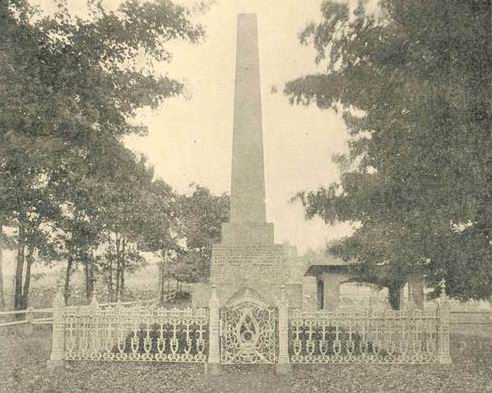|
1999-2003 (Return to Web Text-ures) |
Click Here to return to |
|
1999-2003 (Return to Web Text-ures) |
Click Here to return to |
CAPTAIN WADSWORTH OF MILTON ATTACKS THE INDIANS AT SUDBURY
About four hundred of King Philip’s warriors fell upon the little village of Marlborough in the year 1676. The news soon reached Boston, and Captain Samuel Wadsworth, a resident of Milton, was sent with a company of fifty soldiers to the relief of the town. His force joined that of Captain Brocklebank of Marlborough, consisting of about twenty more men, and following the Indians to South Sudbury they soon came upon some of them. The savages retired slowly through the woods, until they had led Wadsworth’s men so far in that they were able completely to surround his company. War-whoops and shot came from every tree, and there was no possible chance of retreat as there were over five hundred Indians in the band. With great bravery the whites defended themselves until nightfall. The Indians then set fire to the woods, and the smoke compelled the surrounded soldiers to retire from their position. It was now determined to force a way through, but in trying to do this all the white men were killed or taken prisoners, and those who were captured suffered the most frightful tortures. It is doubtful if any escaped, though some historians believe that a few cut their way to safety. Captain Wadsworth fell and with twenty-eight of his men was buried in a large grave near the place where the fight took place. The Rev. Benjamin Wadsworth, a son of the gallant Captain and once the president of Harvard College, erected in 1790 a monument over this grave, and some years later the Commonwealth of Massachusetts and the town of Sudbury united in erecting another monument, at the base of which is the old tablet that marked the earlier grave. The Indians lost heavily but were nevertheless so elated by this victory that they sent word to the authorities in Boston to provide plenty of food as they intended to “dine with them on election day.” This disaster was keenly felt in Boston and especially in Milton, as Captain Wadsworth was one of the town’s most influential citizens, having served at one time with Robert Babcock as a Committee of Militia for the town. He moved to Milton from Sudbury in 1656 and married the daughter of Robert Vose. His house stood on Wadsworth Hill, and at that time it was over a mile from any other house.
King Philip’s power soon began to wane, his end coming in August of this same year by the hand of one of his own men. His head was exhibited on a gibbet for twenty years. His helmet and the barrel of the gun that killed him are displayed in Pilgrim Hall at Plymouth.

From a photograph..
Taken for the book.
MONUMENT IN SOUTH SUDBURY, MASS.
Erected to commemorate the gallant attack on the Indians by Captain Samuel Wadsworth of Milton and others, who were killed during the fight. The inscription on the monument reads as follows: “This monument is erected by the Commonwealth of Massachusetts and by the Town of Sudbury in grateful remembrance of the service and sufferings of the founders of the State and especially in honor of Captain S. Wadsworth of Milton, Captain Brocklebank of Roxbury and Lieut. Sharp of Brookline and twenty-eight others, men of their command, who fell near this spot on the 18th of April [an error for 21st of April] 1676, while defending the frontier settlements against the allied Indian forces of Philip of Pokanoket. 1852.”